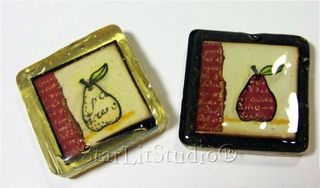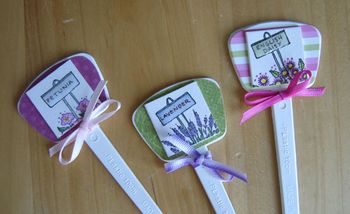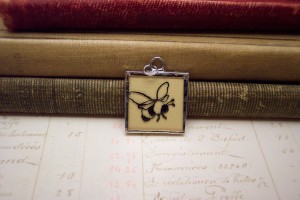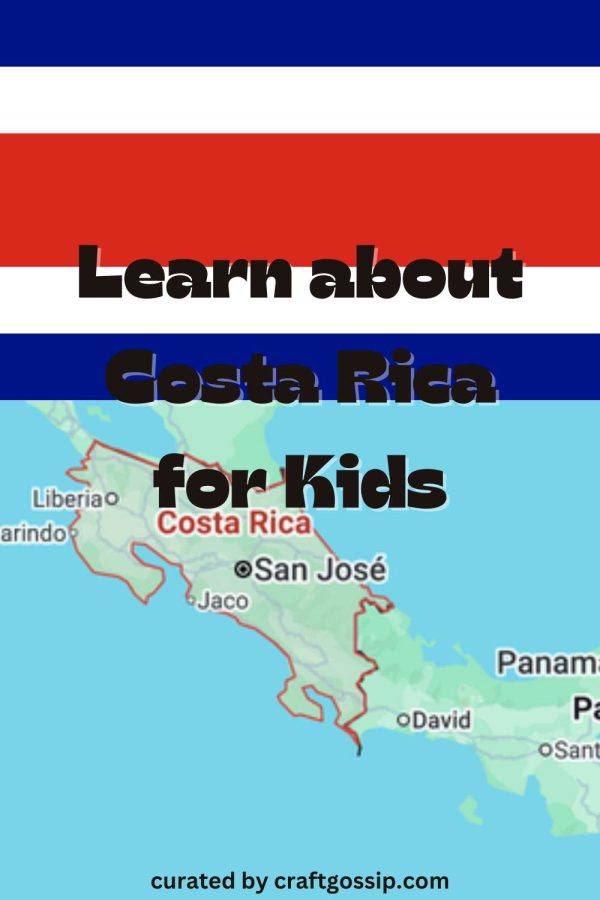
image by Ellen Hudson and Cindy Lyles
Have you heard of Inchies?? Well inchies are simply tiny pieces of art that measure only one inch square. The possibilities are endless, you can stamp them, collage them, whatever you like as long as they are only one inch. You can use them alone or in groups, maybe add a magnet on the back, add them to card fronts, gift tags, scrapbook pages etc. Save your cardstock and pattern paper scraps, they make perfect bases for inchies. It can be a really fun challenge to your creativity to see how much you can fit on one little square.
Ellen Hudson has a wonderful blog dedicated to inchies called Inchie Inklings, she’s shares lots of great ideas how to make and use inchies.
Join Shari Carroll from Hero Arts on Youtube for a great video on how to make a panel card with inchies.
Lisa Lee also has a terrific blog all about inchies called All in an Inch, I love the plant stakes she made!

image by All in an Inch
Below is an inchie pendant I made. I stamped the bee onto a one inch square of glass using Staz-On ink then I sandwiched a one inch square of yellow cardstock between the stamped glass and another one inch square of glass and soldered around them, adding a jump ring. Visit my blog for more info about my pendants and soldering.

image by Heather Holbrook
